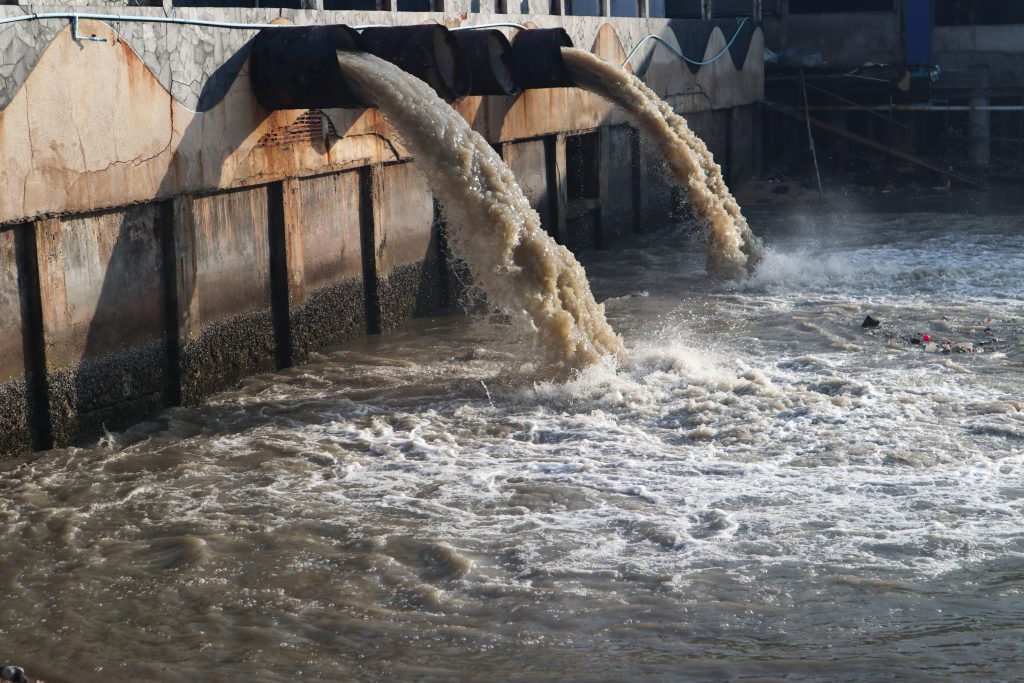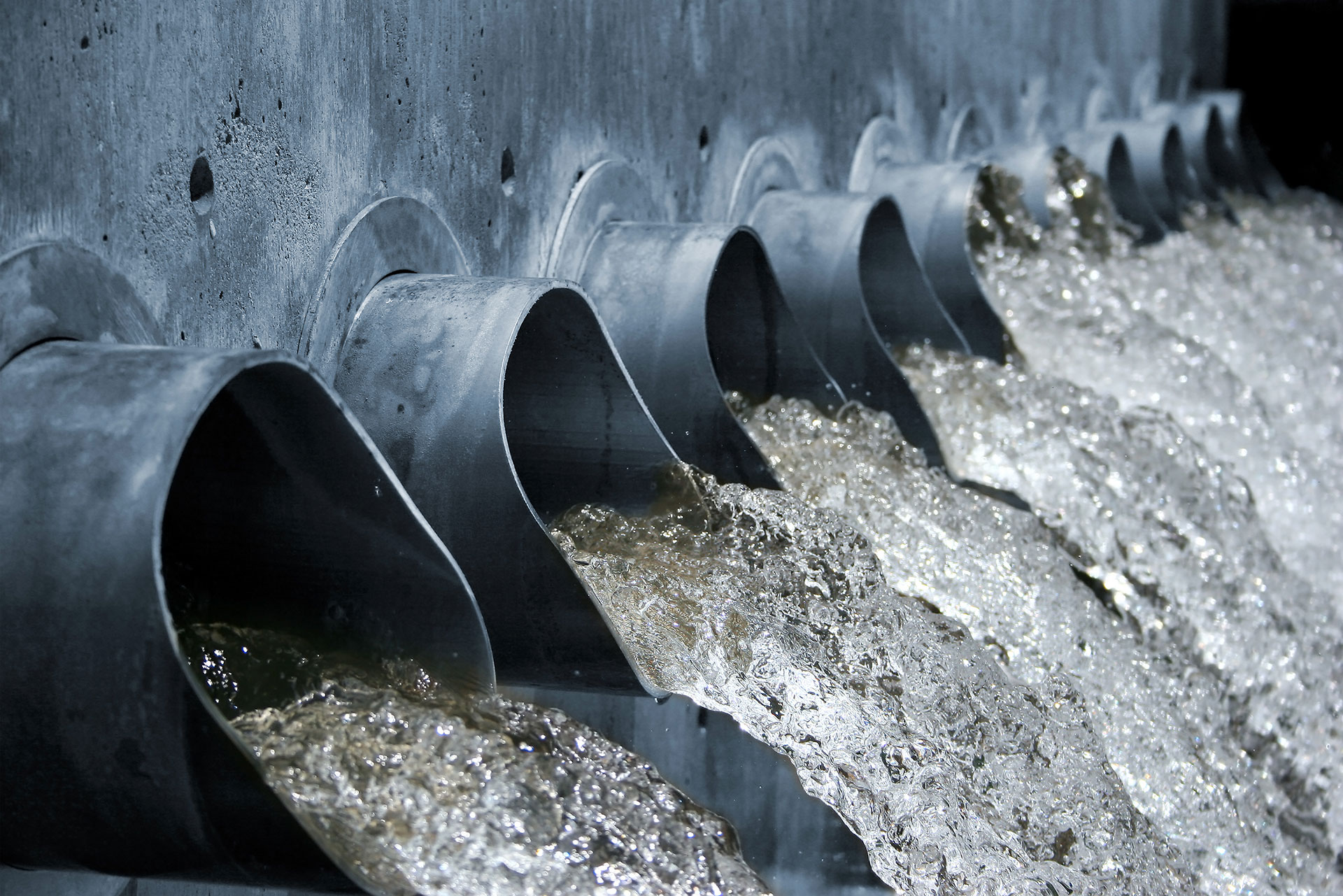Industrial Waste Water Treatment-- Shield the Atmosphere with Specialist Water Treatment Solutions
Industrial Waste Water Treatment-- Shield the Atmosphere with Specialist Water Treatment Solutions
Blog Article
Secret Techniques in Industrial Waste Water Therapy Processes
The therapy of industrial wastewater is an essential aspect of ecological administration, including an array of strategies created to minimize the influence of pollutants. Innovations in technologies such as membrane filtration and advanced oxidation procedures use innovative options for improving therapy effectiveness.
Physical Therapy Methods
How effectively can physical treatment methods address the complexities of commercial wastewater? Physical therapy techniques play an essential function in the preliminary stages of wastewater management, focusing primarily on the elimination of solids and huge particulates. Strategies such as purification, flotation, and sedimentation are necessary for lowering the focus of suspended solids, thereby enhancing the performance of succeeding treatment processes.
Sedimentation involves the gravitational settling of solids, permitting for the separation of larger materials from the wastewater. This approach is especially effective in clearing up water prior to chemical or organic therapies.
Furthermore, flotation protection techniques, which make use of air bubbles to lift put on hold solids to the surface for removal, are effective in dealing with wastewater with high concentrations of fats, oils, and greases. On the whole, physical treatment approaches function as an essential primary step in the comprehensive administration of industrial wastewater, making sure that the load on succeeding therapy stages is lessened and boosting overall therapy efficiency.
Chemical Therapy Strategies
While physical treatment methods prepared for efficient wastewater monitoring, chemical treatment techniques are necessary for dealing with the more intricate contaminants usually discovered in industrial effluents. These techniques utilize different chemical representatives to precipitate, counteract, or oxidize damaging substances, making sure a more comprehensive elimination of pollutants.
One common technique is coagulation and flocculation, where chemical coagulants such as aluminum sulfate or ferric chloride are included to promote the aggregation of put on hold bits. This procedure enhances solid-liquid splitting up, reducing turbidity and enhancing water quality. In addition, neutralization procedures are utilized to change the pH of wastewater, utilizing acids or bases to neutralize acidic or alkaline streams, specifically.
Oxidation-reduction reactions play a vital role in degrading natural impurities and pathogens. Chemical oxidants like chlorine, ozone, or hydrogen peroxide are used to damage down intricate natural compounds, making them less damaging or extra naturally degradable. Moreover, progressed oxidation procedures (AOPs) incorporate multiple oxidation techniques to improve contaminant elimination performance.
Organic Therapy Procedures
The performance of wastewater therapy is considerably enhanced by biological treatment processes, which harness the all-natural metabolic tasks of microbes to decay raw material and get rid of toxins. Industrial Waste Water Treatment. These procedures mainly include anaerobic and aerobic digestion, each customized for details sorts of wastewater
Cardio therapy processes utilize oxygen to sustain microbial development, promoting the break down of organic pollutants right into co2 and water. Typical methods include turned on sludge systems, where oygenation containers assist in the mixing of wastewater with microorganisms, and dripping filters, which motivate biofilm growth on media surface areas.
Conversely, anaerobic treatment procedures occur in the absence of oxygen, utilizing anaerobic microorganisms to disintegrate raw material, leading to biogas manufacturing, a renewable resource resource. Anaerobic digesters are often employed in commercial settings for this purpose, properly minimizing the volume of sludge while creating important biogas.
The option of an organic therapy method relies on wastewater qualities, therapy objectives, and regulatory criteria. The integration of organic processes in wastewater treatment not just improves toxin removal performance but likewise promotes sustainability by lessening chemical use and supporting source recovery.
Advanced Oxidation Processes

Usual AOP techniques include Fenton's ozonation, reagent, and photocatalysis. Fenton's reagent, a combination of hydrogen peroxide and ferrous iron, militarizes the development of hydroxyl radicals, making it effective for treating wastewater consisting of phenolic substances and various other recalcitrant compounds.
AOPs use numerous advantages, including minimized sludge manufacturing and the capacity to treat wastewater with high concentrations of organic contaminants. Nonetheless, the execution of AOPs requires careful consideration of operational specifications and cost-effectiveness, making certain that these innovative strategies are appropriately integrated into existing wastewater treatment systems.
Membrane Purification Technologies

Microfiltration is efficient for getting rid of suspended germs and solids, while ultrafiltration targets smaller sized natural particles and infections. Nanofiltration bridges the gap between ultrafiltration and reverse osmosis, successfully getting rid of divalent ions and natural compounds. Reverse osmosis offers the greatest level of filtration, utilized mostly for desalination and getting rid of mono-valent ions.
Membrane layer technologies offer various advantages, including low energy consumption compared to conventional treatment methods, modular design for scalability, and the capacity for water recovery and reuse. However, challenges such as membrane fouling and the need for normal upkeep have to be resolved to make next page sure system effectiveness. Overall, membrane purification modern technologies represent an important component of modern commercial wastewater therapy techniques, advertising sustainability and resource preservation in water management.
Verdict
To conclude, commercial wastewater treatment utilizes a varied selection of methods, including physical, chemical, organic, and progressed methods. Each approach plays an essential function in efficiently addressing various impurities, improving water quality, and advertising resource sustainability. The assimilation of these methods fosters a thorough therapy strategy, making certain that industrial effluents fulfill regulative criteria while lessening environmental effect. Proceeded improvements in these techniques will better enhance the performance and efficiency of wastewater therapy processes in commercial setups.
The therapy of industrial wastewater is an important facet of environmental administration, entailing a range of methods created to mitigate the effect of impurities.Just how effectively can physical treatment techniques resolve the intricacies of industrial wastewater?Advanced oxidation processes (AOPs) stand Get the facts for a sophisticated approach in commercial wastewater therapy, made to effectively deteriorate organic contaminants that are usually resistant to conventional treatment methods (Industrial Waste Water Treatment).In conclusion, industrial wastewater treatment employs a diverse array of techniques, including physical, chemical, biological, and advanced approaches. Proceeded innovations in these methodologies will certainly better boost the performance and performance of wastewater therapy procedures in industrial settings
Report this page